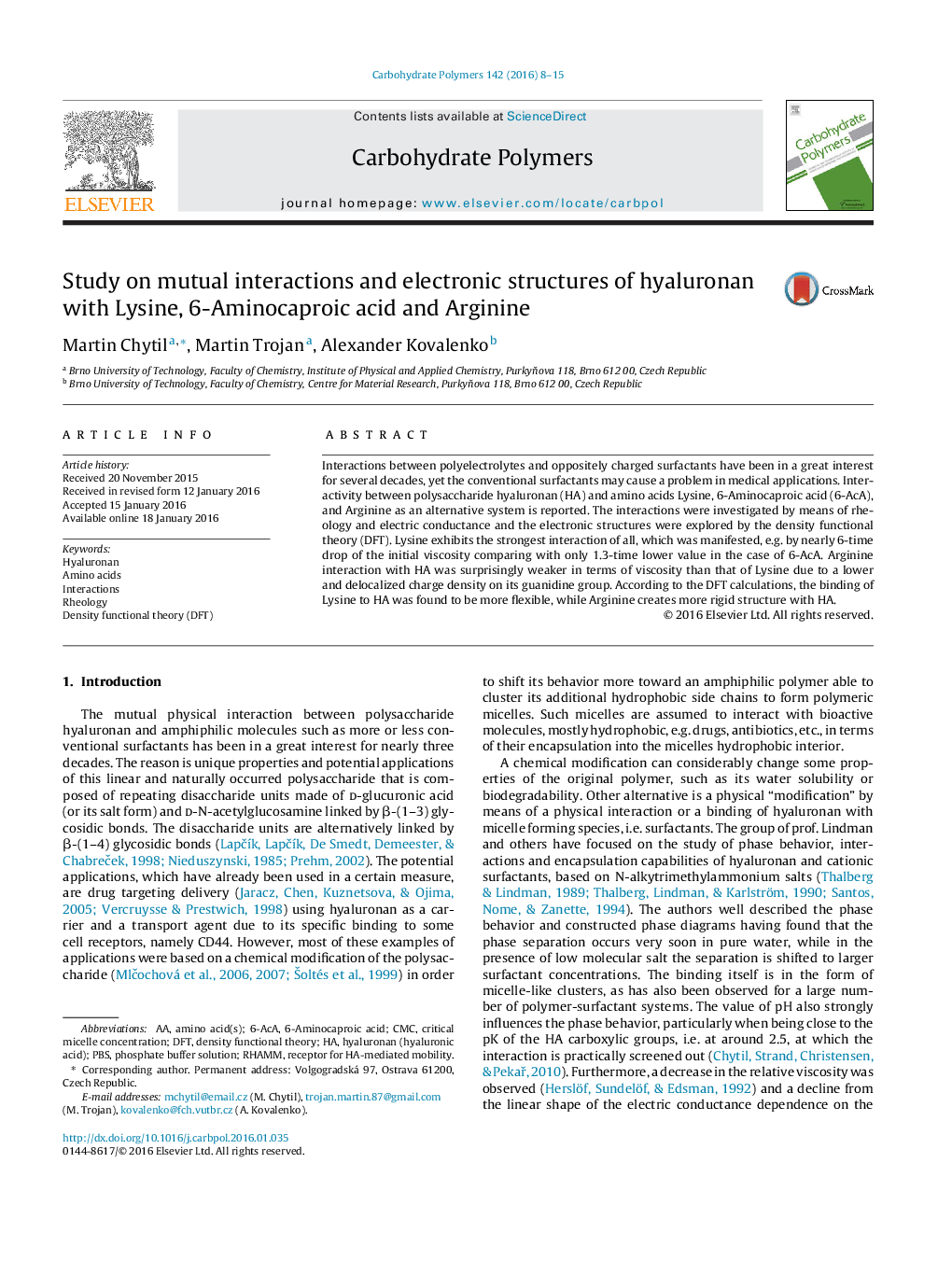| Article ID | Journal | Published Year | Pages | File Type |
|---|---|---|---|---|
| 1383293 | Carbohydrate Polymers | 2016 | 8 Pages |
•Interactions between hyaluronan (HA) and the studied amino acids are proved.•Lysine shows the strongest interactivity of all the amino acids studied.•Arginine displays a different mechanism of binding to HA.•Optimized 3D structures of the HA-amino acids associates are calculated.•Arginine forms more rigid structures with HA than the other amino acids.
Interactions between polyelectrolytes and oppositely charged surfactants have been in a great interest for several decades, yet the conventional surfactants may cause a problem in medical applications. Interactivity between polysaccharide hyaluronan (HA) and amino acids Lysine, 6-Aminocaproic acid (6-AcA), and Arginine as an alternative system is reported. The interactions were investigated by means of rheology and electric conductance and the electronic structures were explored by the density functional theory (DFT). Lysine exhibits the strongest interaction of all, which was manifested, e.g. by nearly 6-time drop of the initial viscosity comparing with only 1.3-time lower value in the case of 6-AcA. Arginine interaction with HA was surprisingly weaker in terms of viscosity than that of Lysine due to a lower and delocalized charge density on its guanidine group. According to the DFT calculations, the binding of Lysine to HA was found to be more flexible, while Arginine creates more rigid structure with HA.
